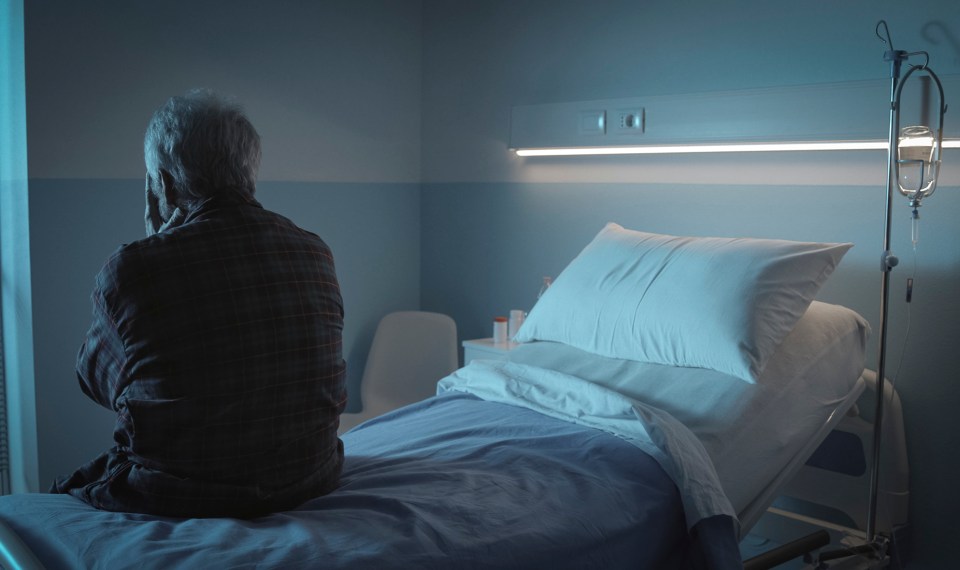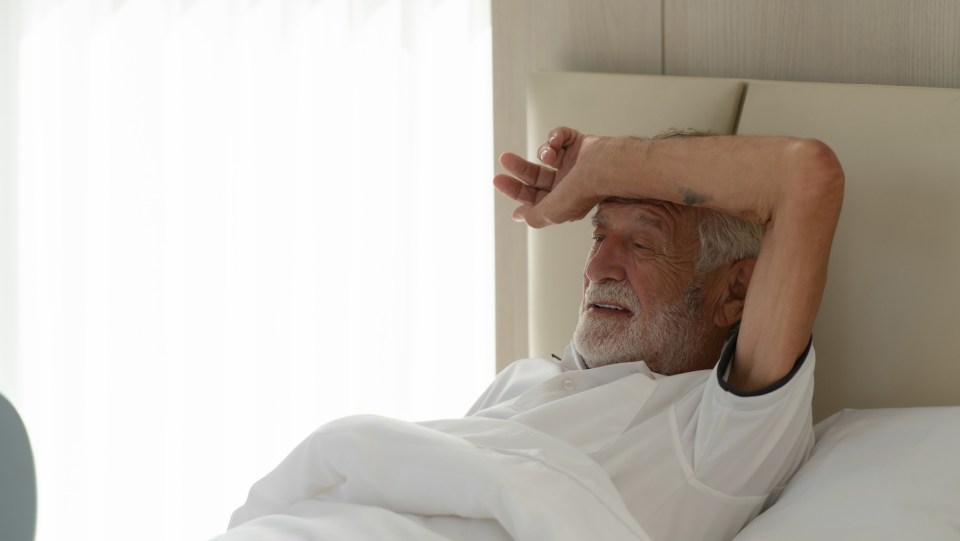I don’t know about you, but I am a big fan of sleep. My entire life seems off-kilter if I don’t get my minimum eight hours a night. Turns out, there are scientific reasons for feeling this way.
Sleep is vital for maintaining health and healing. Growth hormones, responsible for physical repair and renewal, are primarily secreted during sleep. Sleep deprivation has serious impacts including decreased pain tolerance, increased immunosuppression, delayed healing, confusion, disorientation and delusions, higher blood pressure and higher heart rate.
Considering these negative impacts, it is clear that poor sleep quantity and quality can be even more detrimental to those hospitalized. However, sleep is often elusive in the hospital setting. To get an understanding of the reasons why, we need to first consider what is known about sleep from a scientific perspective.
What Happens During Sleep?
During sleep we are no longer conscious of our environment, yet the brain continues to receive sensory information monitoring the environment for threats, filtering out and ignoring what it can and only attending to potentially threatening stimuli.
This subconscious vigilance is important for protecting us from danger, but makes sleep fragile in high sensory environments such as the hospital. The arousal threshold is highest during the most restorative phase of sleep, slow wave sleep (SWS), which is decreased in ill patients, suggesting that patients spend more time at night with a lower arousal threshold making uninterrupted sleep less likely.
To complicate things further, researchers have observed a phenomenon called the “first night effect,” in which the left hemisphere of the brain remains semi-active when people sleep in a new place. This “unihemispheric sleep” is another evolutionary response, keeping us vigilant for unknown threats.
Clearly the science tells us that the odds are stacked against hospitalized patients getting a good night sleep from the very beginning. Then, to make it more complicated there are man-made activities that further contribute to poor sleep hygiene in hospitals. There are no surprises here. The more common of these activities include:
- Uncomfortable beds
- Noisy equipment
- Loud staff conversations
- Bright lights
- Diuretics in the afternoon
- Routine care (vital signs and phlebotomy)
At first blush, one might be tempted to think there is no way any of these activities can be changed. After all, “we have always done it this way.” However, many organizations are challenging that way of thinking and taking steps to have a patient-centered approach to care that is more “sleep-friendly.”
Reducing Nighttime Disturbances
The U Sleep program formalizes a program that has been ongoing within individual units at Ronald Reagan UCLA Medical Center and UCLA Medical Center, Santa Monica, California, to improve the quality and quantity of sleep by reducing nighttime disturbances both in and outside of patients’ rooms.
Every unit now is accountable for developing and implementing processes to improve a patient’s ability to rest and get meaningful sleep, especially at night.
The strategies are wide-ranging. They include eliminating minor nuisances, such as squeaky wheels on carts that tend to awaken patients during the night, automatic doors slamming shut and loud talking at the nurses’ station. The program also aims to reduce noises and other disturbances at the bedside from beeping monitors, ventilators and pumps to the bright lights emanating from computer screens.
Each night at approximately 10 p.m., an announcement reminds UCLA hospital visitors and staff that it is bedtime and urges them to refrain from noise. Eye shields and earplugs are made available to patients, as is a station on their television that plays relaxation songs and sounds.
Efforts also are being made to bundle nursing services in ways that eliminate unnecessary middle-of-the-night interruptions. “The healthcare of the patients is always the highest priority. But we want to make sure that we aren’t waking patients up if there is no clinical reason to do so,” says the nursing director of the intermediate care unit, where the program is known as Quiet Time.
Patients are also asked about their sleep habits when they are admitted to the hospital in an attempt to individualize their plan of care in a way that ensures their sleep needs are met.
Reducing Delirium and Improving Patient Perceptions on Sleep in the Hospital
A team of doctors, nurses, psychologists and pharmacists in the medical intensive care unit at Johns Hopkins Hospital implemented a project to see if by taking simple steps to reduce nighttime noise, light and staff interruptions, as well as stopping certain medications for insomnia, they could reduce delirium and improve patient perceptions about the quality of their sleep.
With their interventions, they were able to improve a patient’s odds of being free of delirium in the ICU by 54%, even after taking into account the diagnosis, need for mechanical ventilation, age and other factors. In addition, many patients reported the ICU was quiet and comfortable enough for them to get a good night’s sleep.
Three sets of interventions were introduced in stages. The first was a 10-item environmental checklist that included turning off televisions, room and hallway lights; safely consolidating the number of staff visits to patient rooms overnight for drawing blood and giving medications; reducing overhead pages; and minimizing unnecessary equipment alarms.
In the second stage, patients were offered eye masks, ear plugs and tranquil music.
In the final stage, a new medication guideline was introduced that discouraged giving patients certain commonly prescribed drugs for sleep, such as benzodiazepines, that are known to cause delirium.
Performing ‘Sleep Rounds’
The medical school staff at the University of Utah School of Medicine/Johns Hopkins School of Medicine performed a study at a large, urban, tertiary teaching hospital for 19 months. In this study, “Sleep Rounds” were instituted. Prior to the implementation of Sleep Rounds, nursing was educated about sleep in the hospital and about the planned interventions. Posters promoting sleep were hung in the units. Sleep Rounds were performed at approximately 11 p.m. nightly using a Sleep Rounds checklist, which formalized simple hospital functions, such as lights out, television off, room temperature adjustments (cooler better) and a final restroom visit.
In the final phase of the study, a team of undergraduate volunteers was organized to assist with the delivery of Sleep Rounds. Nurses still completed the checklist, but the volunteers offered patients any of the following amenities: warm blanket, warm milk, white-noise machine, hypoallergenic lotion and room spritzer. Noise-sensitive traffic lights were placed at the nurses’ station and in the staff break room. These lights turned yellow when noise levels reached 40dB and red when levels exceeded 50dB; the World Health Organization recommends that sound levels in hospitals should not exceed 30-40 decibels at night.
Here is the Sleep Rounds checklist and script provided to nursing staff:
Good night. I am a member of the Sleep Squad.
I am here to do your nightly sleep rounds. It is now bedtime.
- Would you like to go to the bathroom?
- What would be a comfortable thermostat temperature, so you can sleep better?
- Can I offer you a snack before bedtime?
- What is your current pain level?
- Can I offer you a pillow or blanket?
- May I turn off the lights before I leave?
- May I turn off the TV before I leave?
- May I draw the curtains for you?
- What else can I offer, so you can sleep better?
I am going to close the door to limit outside noise and light, so you can sleep better. It would be my pleasure to help you during the night. Please ring the call bell if you need my assistance. Have a pleasant night!
What they learned from rounding:
- Hospitalized patients suffer from poor sleep quality and quantity
- Implementation of simple measures such as Sleep Rounds to change standard practice within the hospital is feasible and effective
- Despite an increase in measured noise, patients’ perception of their sleep and of noise levels was improved by these measures.
The lesson in all these cases is that even simple changes can make a difference in how well our patients sleep. If the payoff is greater ability to participate in therapy, less confusion and better wound healing, it seems developing processes around sleep hygiene is a win-win for staff and patients.
References:
Ciolek, C. Sleep: A key factor for well-being. Provider Magazine-Long Term & Post-Acute Care. January 2020.
Dubose, J. Improving inpatient environments to support patient sleep. International Journal for Quality in Health Care. 2016, 28(5), 540-553.
Getting a better night’s sleep in the hospital to improve healing. Vital Signs. UCLA Health. Spring 2018
Heath, S. Do amenities drive patient satisfaction over clinical quality? Patient Satisfaction News. February 20, 2020. https://patientengagementhit.com/news/do-amenities-drive-patient-satisfaction-over-clinical-quality
Lou, N. How bad are sleep problems for hospital patients? Medpage Today. July 18, 2018.
Monson, N. How to sleep in the hospital. Explainers. March 12, 2019.
Rapaport, K. Sleep problems in older adults linked to cognitive decline and dementia. Health News. January 15, 2020.
Simple measures to promote sleep can reduce delirium in intensive care patients. Hopkins Medicine.org. February 20, 2013.
Telias, I. Sleep and circadian rhythm in critical illness. Critical Care. (2019) 23:82.
Thomas, K. Sleep rounds: A multidisciplinary approach to optimize sleep quality and satisfaction in hospitalized patients. Journal of Hospital Medicine. Vol 7. No 6. July/August 2012.
The content of this site is for informational purposes only and should not be taken as professional medical advice. Always seek the advice of your physician or other qualified healthcare provider with any questions you may have regarding any medical conditions or treatments.




